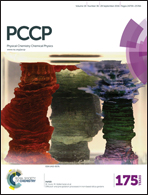Tuning the structure and mechanical property of polymer nanocomposites by employing anisotropic nanoparticles as netpoints†
Abstract
Introducing carbon nanotubes or graphene sheets into polymer matrices has received lots of scientific and technological attention. For the first time, we report a new kind of polymer nanocomposite (PNC) by means of employing anisotropic nanoparticles (NPs) as netpoints (referred to as an end-linked system), namely with NPs acting as netpoints to chemically connect the dual end-groups of each polymer chain to form a network. By taking advantage of this strategy, the anisotropic NPs can be uniformly distributed in the polymer matrix, with the NPs being separated via the connected polymer chains. And the separation distance between NPs, the stress–strain behavior and the dynamic hysteresis loss (HL) can be manipulated by varying the temperature and the polymer chain flexibility. Meanwhile, the physically mixed system is investigated by changing the interaction strength between polymer and NPs, and the temperature. It is emphasized that compared to the physically mixed system, the end-linked system which employs carbon nanotubes or graphene as netpoints possesses good thermal stability because of its thermodynamically stable morphology, exhibiting both excellent static and dynamic mechanical properties. These results help us to design and fabricate high performance and multi-functional PNCs filled with carbon nanotubes or graphene, facilitating the potentially large industrial application of these nanomaterials.


 Please wait while we load your content...
Please wait while we load your content...